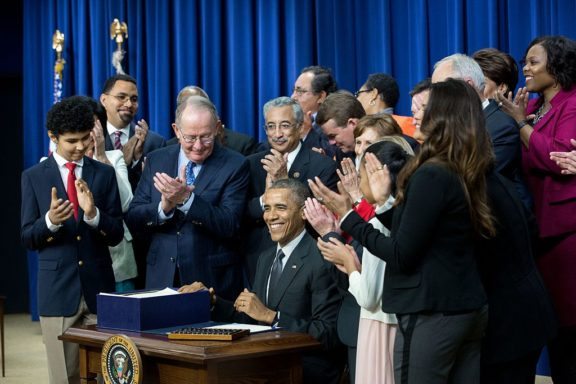
April 23, 2017; Santa Fe New Mexican (AP)
States and school districts across the country are preparing for a brave new experiment in assessment. The federal Every Student Succeeds Act, passed in 2015, includes flexibility for states to design their own criteria for determining the effectiveness of their K-12 instructional systems. About 15 states have submitted or are about to submit their accountability blueprints. The remaining states will submit their plans in September.
Connecticut and Delaware, for example, are looking at college readiness, focusing on students taking academically challenging courses and how students score on the SAT college admissions test. Tennessee wants to focus on school performance, with each school receiving an A–F grade as a way to inform parents about the quality of their local public schools. Vermont and Connecticut plan to evaluate student physical fitness as a component of school quality.
Not surprisingly, almost all states are evaluating chronic absenteeism as an indicator. This makes sense for both altruistic and self-interested reasons. In order for students to benefit from education, they should be physically present. In addition, most states allocate state aid to education based at least in part on how many students are being educated by a school district. The more student absenteeism, the lower the average daily membership (ADM) and the lower funding going to that school district.
Sign up for our free newsletters
Subscribe to NPQ's newsletters to have our top stories delivered directly to your inbox.
By signing up, you agree to our privacy policy and terms of use, and to receive messages from NPQ and our partners.
U.S. Education Secretary Betsy DeVos is responsible for approving states’ assessment and evaluation plans. According to the AP, DeVos “has said her goal is state and local flexibility in education and indicated that she might use the process to advance school choice.”
The new metrics and the methods by which states are developing them are receiving early praise, especially for reaching out to stakeholders for comment and input. A representative of the Council of Chief State School Officers said, “They’ve been very proactive to engage anybody who has an interest in the plans.”
There are concerns, however, that a lack of uniformity in standards will make it difficult to perform comparisons between states. Moreover, there is a risk that some student populations, such as students with disabilities or special learning needs, may be lost in the shuffle as states choose broad measures and, possibly, measures they believe will put their schools in a favorable light.
Marc Magee, CEO of 50Can, an education nonprofit, expressed concern that “if everybody doesn’t hold up their end of the bargain, we could go back to that era where certain populations of students become invisible inside schools even if they are struggling mightily and not getting the opportunity that they deserve.”—Michael Wyland












